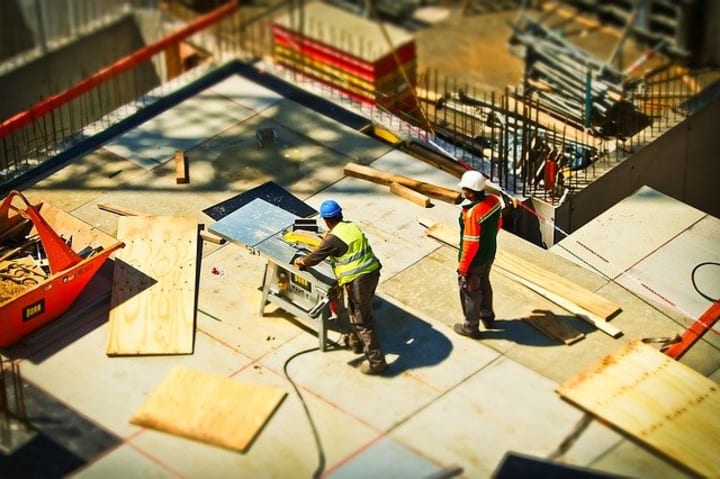PRB: The More Popular Jargon
What PRB is, how it works, and who can install it

If you're a construction engineer or any other road, building, and construction professional, then you've likely heard the term "permeable reactive barrier" (PRB) before. But what exactly does that mean? And why is it such an important part of modern construction?
We will also discuss what PRB is, how it works, and who can install it. Meanwhile, we will tackle the benefits of the PRB as jargon! It is jargon that is hard to understand or popularly used many times!
No matter how hard to understand the acronym PRB as jargon, we will try to explain the essential facts. By the end of this post, you'll have a better understanding of PRB and why it's so crucial for current construction projects.
What is jargon? Jargon is a language specific to a particular profession or group, difficult for outsiders to understand. Jargons help professionals communicate more effectively with each other, but they can also be confusing and challenging to learn.
What is a permeable reactive barrier (PRB) as jargon? PRB is a type of soil treatment used to improve the water quality in an area. It works by creating a barrier between the contaminated groundwater and the environment.
What is PRB?
Permeable reactive barriers, or PRBs, are a type of soil reinforcement used to reduce the number of contaminants that reach water resources. They use a filtration system to remove pollutants from the groundwater before it reaches the water table.
What is a permeable reactive barrier?

Permeable reactive barrier (PRB) is a type of soil treatment that helps to manage groundwater and stormwater runoff. It creates a barrier between the soil and the water table. This barrier allows water to flow through it while preventing pollutants from entering the groundwater or surface water.
PRB is a "permeable reactive barrier" because it is often constructed out of sand or dirt and then covered with a porous material like gravel, crushed stone, bricks, or other porous materials. This helps prevent runoff from entering the soil below while still allowing water to flow through the barrier. The most common type of PRB is made from concrete blocks or interlocking bricks that have been laid down in layers.
Who can do permeable reactive barrier?
Permeable reactive barriers are usually constructed by engineers, landscape architects, and civil contractors who specialize in stormwater management projects such as those involving the construction of new roads or buildings. However, anyone with the proper training and experience can install a PRB.
How does a permeable reactive barrier work?
Permeable reactive barriers work by creating a physical barrier between the soil and the water table. This prevents pollutants from entering the groundwater or surface water while still allowing water to flow through. The most common type of PRB is made from concrete blocks or interlocking bricks that have been laid down in layers.
When a PRB is installed, the first layer of blocks or bricks is placed on the soil. This forms the barrier's base and helps keep the soil in place. The next layer consists of blocks or bricks with small holes or pores. This allows water to flow through but prevents pollutants from entering. The final layer is made up of blocks or bricks that have been specifically designed to allow water to pass through but not pollutants.
Why use a permeable reactive barrier?
There are several reasons why permeable reactive barriers are becoming increasingly popular among construction professionals. Here are some of the essential benefits of PRB:
Benefit # 1
It prevents pollutants from entering groundwater and surface water. How will it prevent pollutants from entering groundwater? It reduces the amount of water needed for stormwater runoff. This is done by slowing down the rate at which water enters the soil, soaking in more slowly.
Benefit # 2
It helps manage groundwater and stormwater runoff in an environmentally friendly way. PRB helps reduce the number of pollutants entering waterways while also helping to manage groundwater and stormwater runoff in an environmentally friendly way.
Benefit # 3
PRB is a cost-effective solution for managing groundwater and stormwater runoff. It's also less expensive than other water management methods, such as installing culverts or building dams. The initial investment required to install a permeable reactive barrier may be higher than other options, but it is a more cost-effective solution over the long term.
Benefit # 4
It can be installed on a variety of surfaces. Permeable reactive barriers can be installed on various surfaces, including asphalt, concrete, and pavers. This makes them a versatile option for many construction projects.
Why is PRB popular?
The permeable reactive barrier is quickly becoming one of the most popular methods for managing groundwater and stormwater runoff. It's a cost-effective solution that helps reduce pollution in waterways while also helping to manage groundwater and stormwater runoff in an environmentally friendly way.
Who can do PRB?
Permeable reactive barriers are usually constructed by engineers, landscape architects, and civil contractors who specialize in stormwater management projects such as those involving the construction of new roads or buildings. However, anyone with the proper training and experience can install a PRB.
How does a permeable reactive barrier work?
When a PRB is installed, the first layer of blocks or bricks is placed on the soil. This forms the barrier's base and helps keep the soil in place. The next layer consists of blocks or bricks with small holes or pores. This allows water to flow through but prevents pollutants from entering. The final layer is made up of blocks or bricks that have been specifically designed to allow water to pass through but not pollutants.
The Part That Says it All
If you are in the engineering or construction fields, it is essential to be aware of the permeable reactive barrier and its many benefits. By consulting with a professional about installing a PRB on your next project, you can ensure that your team uses the latest and most effective techniques to keep everyone safe and protect our environment.
The permeable reactive barrier is critical for many constructions and engineering projects. If you’re not familiar with it, don’t worry - we can help. Contact us today to speak with one of our experts about your next project and how a PRB could be a vital part of keeping things safe and sound.
Permeable reactive barriers are extraordinary. They're easy to maintain, reduce runoff by up to 87%, and last years longer than traditional stormwater systems! Why all these benefits? Because permeable reactive barriers are designed with one thing in mind: protecting people and the environment from contamination.
"PRBs have been used since at least 1988 to treat contaminated groundwater at Superfund sites," according to a report published by U.S. Environmental Protection Agency (EPA)." If you're looking for an environmentally-friendly and cost-effective way to manage your stormwater, look no further than the permeable reactive barrier.
As you can see, there are several reasons why permeable reactive barriers (PRB) are becoming increasingly popular among construction professionals. If you need help installing or maintaining a PRB, call us today!
About the Creator
Jen Hensey
Call me Jen, a writer and blogger of LifeStyleConvo & UrbanHouses, who worked as a full-time content creator. A writer by day and reader by night.






Comments
There are no comments for this story
Be the first to respond and start the conversation.